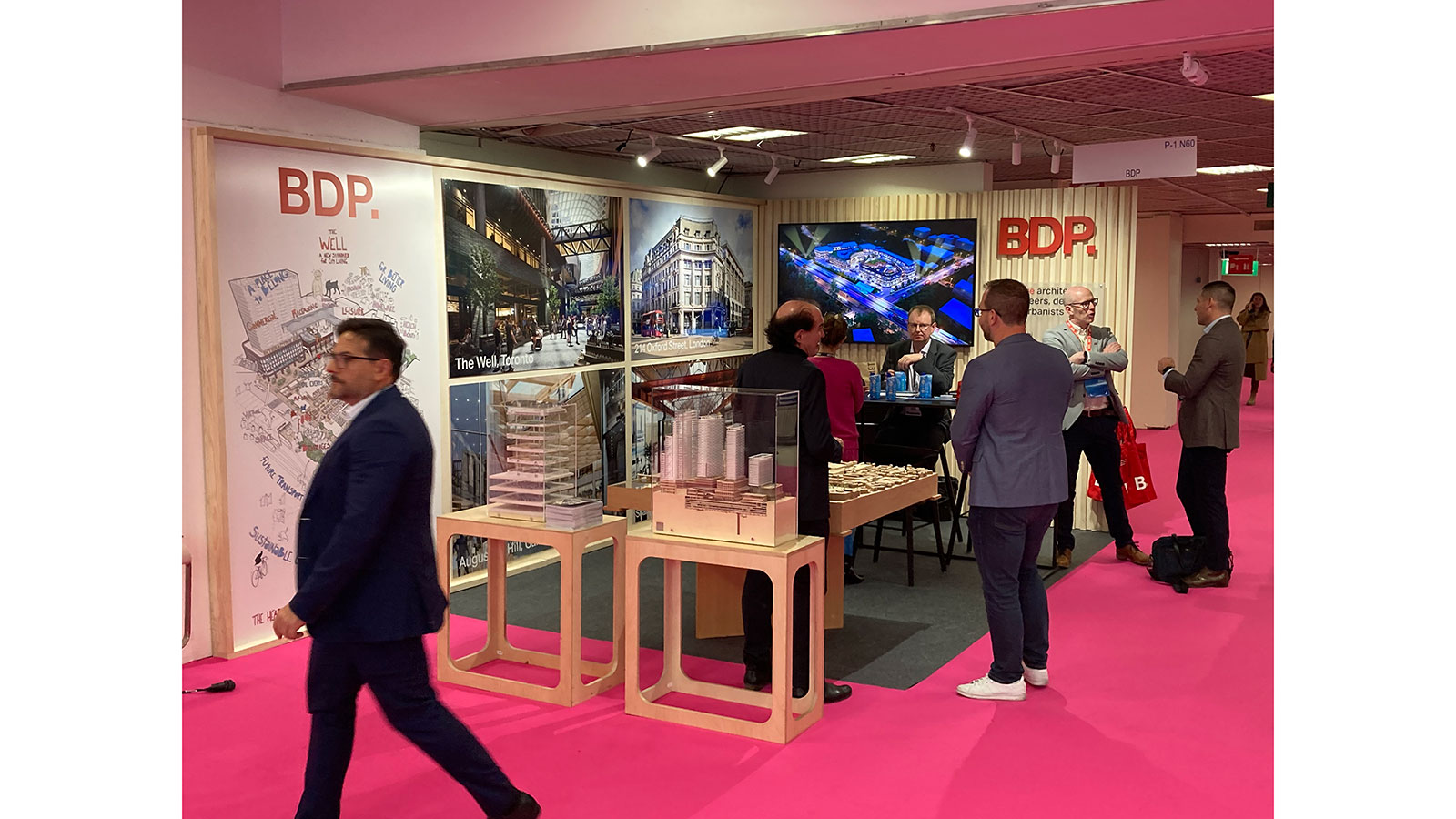#{Title}
#{Copy}
That’s a wrap for MAPIC 2023! Thank you to everyone who visited the BDP stand at MAPIC last week. We always enjoy talking shop about the future of our Cities, retail design and mixed-use spaces.
Huge shoutout to all the visionaries, innovators, and collaborators who made MAPIC 2023 an unforgettable experience. We’re excited to see what 2024 brings for the sector.

But for now, here are our ten takeaways from this year’s event:
1. Placemaking first and foremost.
Beautifully designed, well connected and experiential places are crucial. The quality of a street experience with its multitude of components will define the primary and secondary city/town destinations.
2. Live, work, play.
A mixed-use model bringing together residents, workers and leisure seekers will drive traffic back to our city centres.
3. Community-centric.
Retail isn’t just about the transaction; it's about building communities. From communal spaces to inclusive designs, there is a focus on fostering connections and creating spaces where people feel a sense of belonging. Tenants should also focus on locality, ensuring their brands are relatable to the local community.
4. The retail-tainment business.
Consumers continue to crave immersive experiences and the industry is responding with experiential innovation to create more engaging, and memorable shopping experiences. From interactive installations to sensory-rich environments, the emphasis for 2024 should focus on turning shopping into an adventure.
5. The retail evolution.
Retail is shifting gears, from a fashion-centric approach to a hybrid experience, and convenience-led offer.
6. Food for thought.
F&B remains vital to the retail mix. Smaller independents sitting amongst established brands will bring freshness and a new vitality, appealing to a younger generation of individuals who seek diversity. The quality of design, comfort of interiors and ability to customise the offer is growing increasingly important. Variety and informed curation, aligned to holistic business cases are needed. The combination of food + entertainment is another growing trend.
7. The warehouse effect.
A retail-fulfilment model (eg part retail, part click & collect) operating partly as a warehouse within stores, making use of excess space will support customers’ evolving needs, increase turnover, profitability and help with rising rents.
8. The long haul.
Investors should take a holistic view, and look at the value of whole estate, rather than short term profits.
9. Technology integration.
Technology plays a pivotal role in reshaping the retail landscape. Augmented reality, smart spaces, and seamless digital interactions are at the forefront of the sector. F&B outlets must also embrace new technologies to help cut costs, elevate user experience and capture more data from customers. Pre-ordering tactics are a way of getting directly to the end user, taking a slice of profits back from online food delivery companies.
10. Green is the new black.
Green anchoring and maximising the value of green ‘park’ spaces within city centres will help increase dwell time, drive interest, drive visualisation and deliver more sales.